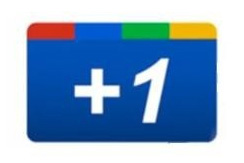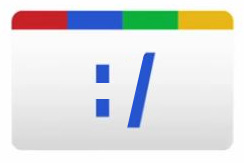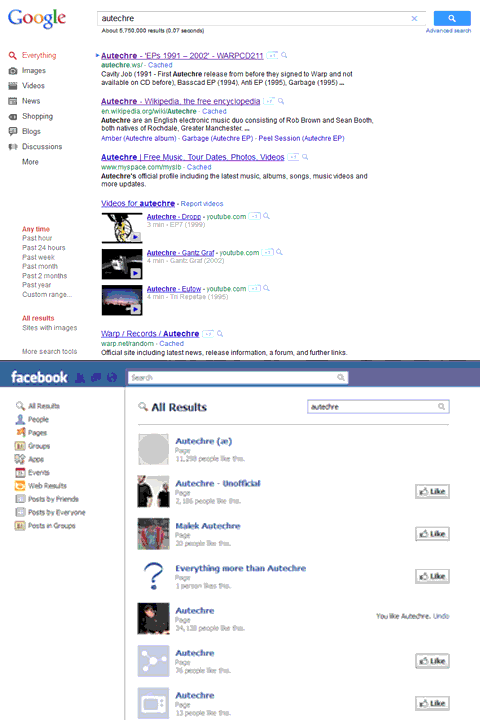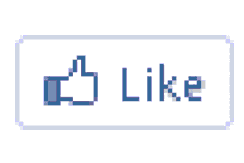Google’s +1 button is a shortsighted way to force the search engine giant to be more like Facebook. In this post, we will find out why the button won’t keep its users interested for very long.
At the end of April, 2011, Google rolled out the +1 button and included it on their search results for users who are logged into their website. Two months later, the social networking service Google+ was introduced to the web in beta to let people get a taste of what the search engine giant has to offer next.
The +1 button and Google+ project are both a response to the major success of Facebook. +1 was integrated into Google’s search engine before their social network to make a transition from Facebook as familiar as possible. If webpages have “Like” buttons on them, why can’t they have +1 buttons as well?
Here are the features of the +1 button:
- +1 will bias search results toward your interests and help return relevant pages based on what it knows that you like
- It may be a minor SEO ranking factor, giving more strength to sites that have been given more +1 clicks
- Any +1 clicks can be shared on Google’s social network to let your friends know what you like
Now we can take a look at why these features won’t save the button.
(Wow. I’m about three paragraphs into this post and there’s so much “plus” that it’s positively overwhelming!)
Why Google’s +1 Button Won’t Survive
Each of the features listed above won’t be enough to make this button work. Let’s break down each of these benefits and see why they won’t keep users interested for very long:
Biasing and Personalizing Search Results
+1 will bias search results toward your interests and help return relevant pages based on what it knows that you like
Biasing search results is something that Google does already. There are several factors that the search engine takes into account that come from the user which are used to refine the results. Previous searches, cookies set by Google, and geographic location will change the results that a user sees.
If Google wanted to see which pages were the most useful in their search results, they could observe each individual user’s behavior.
For example, they could monitor a search, watch someone click through to another site from the search engine results page, and then see if that same person returns to the same results page and clicks on a different link in a short time frame. This would indicate that the user may not have found what they were looking for on their first try and that the one they finally exited out of had what they were looking for. Google could also track which sites are the most important by watching users type in the same queries and click on the exact same results consistently over time.
Tracking user behavior would be a much more dependable way of determining useful pages, too. +1 expects the user to find and click on a button for the useful resources that they come across, something that very few people would be willing to do even for some of the time.
The search engine personalization would only start to work noticeably after the user clicked on a truckload of +1 buttons. Because of the virtually limitless possibilities of queries and results returned, a user would have to have a lot of favorite resources and have to have a pretty limited scope of search queries for anything to be influenced by a +1 personalization. Most users won’t have the patience to do this and few will even see the point.
If someone’s going to personalize their search results anyways, it would make more sense for them to just bookmark the pages that they find useful so that they can quickly access them later. And why shouldn’t they? At that point, the resource has been found. There’s no need to bias toward that resource since the user already came across it without explicitly personalizing for it.
+1 as a Search Engine Ranking Factor
It may be a minor SEO ranking factor, giving more strength to sites that have been given more +1 clicks
Search engines are all about pointing people to the resources that they’re looking for. Once that resource is found, there is no incentive to go back to the results page. Unfortunately, the search results page is where the user would most often give a page a +1 since that’s where Google has their new buttons consistently displayed. Nobody wants to backtrack to rank a resource. They want to stay on the page that they found and actually use that page’s content.
Considering +1 scores as a ranking factor would also be silly for another reason. I’m not sure of exactly how many people do this, but when a lot of users don’t see a result that they like on the first page or two of the results, they refine their search by modifying or adding keywords to the query. So basically, whatever page the user finally lands on is going to be at or near the top of the SERPs to begin with. Giving it a +1 probably isn’t going to help it be any more relevant.
But you can also include a +1 button inside of a webpage! People can click it there, so it doesn’t matter if you’re seeing it on the search engine’s results page, right?
That actually complicates things a bit and makes it unreliable, if not completely useless as a possible ranking factor. Here’s why:
If the +1 only existed on the search results, it might make more sense. There, a +1 would likely be used as a way to tell Google that a particular page was useful when searching for that particular phrase. But because it can exist within pages as well, it can’t be as reliably used as a way to boost rankings within certain queries because people can reach any page without using a search engine and still give it a +1.
My guess is that giving a page a +1 would be virtually the same as giving the page a link on Twitter. Depending who on Google+ gives it, it may be worth slightly more, but it will mostly be a way to break any ties between pages in the search engine results pages.
So what happens if I give a +1 to a webpage that changes or gets sold to someone else? Or if it disappears? Will Google remove my +1? Will I have to give a page another +1 if the page comes back? Do +1’s follow 301 redirects, and if so, would multiple 301’s with their own +1’s be summed together if they all point to the same page? I haven’t come across any answers for these either because the button is still new (unlikely) or because +1 is just a novelty and isn’t anything that we should be making a big deal over.
Sharing Your Interests and Resources with Your Friends
Any +1 clicks can be shared on Google’s social network to let your friends know what you like
Here is where the Facebook influence really shines through. On Facebook, when you Like a page, you are showing that you have an interest in what that page is about, allowing discussions on that page’s subject and possibly making connections based on it.
Google, on the other hand, is treating its entire index of web pages as if it can be used for social networking. But instead of showing interests where people can talk about them, it shows useful resources, which really isn’t useful to anyone other than the person searching for those terms.
“But you’re wrong!” I can hear the Google fans yelling. “+1 is meant to make it easier for you and your friends to be virtual tour guides for one another so you can see which pages they like!”
Again, that makes sense on Facebook where pages are much more generalized. On Facebook, I can see that 40 of my friends like “Music”, 18 of my friends like the band “Skinny Puppy”, 7 of my friends like the synthesizer manufacturer “Korg”, and so on. These are all things, concepts, ideas, broad generalizations.
Google as a search engine is much different. It is meant to return particular information contained on specific webpages, not to list interests. Given the diversity of pages and searches, I seriously doubt that I’d even come across any recommendations from my friends on Google since we search for very different things. I’m not going to see that recommendation for the page “Joe Mauer » Statistics » Batting | FanGraphs Baseball” at fangraphs.com, just like how nobody I know is going to see my +1’d page of “Word-Wrap: Force Text to Wrap” at webdesignerwall.com. The chances of me searching for “Joe Mauer’s stats” are equal to my friends searching for “forcing text wrap in css table”.
The +1 Button’s Name and Usage
Finally, another reason why Google’s +1 button won’t succeed is because of its name. It’s obvious that they wanted to use a term that easily conveyed the idea of positivity, and for that, something like +1 isn’t too bad. How can you get simpler than two characters?
The problem comes when you try to talk about it or use it in a sentence.
“I just plus-one’d this page. It’s a good resource.”
“I’m going to start plus-one’ing my own webpages so my friends can see it on Google Plus.”
“This page used to rock, but now it sucks! I’m un-plus-one’ing it.”
What a hideous load of verbal spew. If it was really so simple, Google wouldn’t need to make a page explaining how to use +1 in everyday English.
Compare this to Facebook’s “Like” button. You don’t need to translate what “liking” something is, let alone explain how to conjugate it as a verb, because there is no translation required.
For example, I like coffee. I can find a page for coffee on Facebook and click the Like button. Then my friends could easily see that, surprise, I like coffee! I can also see which of my friends like coffee as well and maybe start a conversation with people on the coffee page about it if I really wanted to.
With Google+ and the +1 button, my friends would be able to see that I +1’d a page titled “Dunn Bros – 20% Off Dark Roasts” at http://www.example.com/whatever/blahblah?id=5329523&kid=606. This way, my friends could easily see that I am possibly a robot.
Conclusion
Despite Google’s good intentions with the +1 button, the implementation is really just a shortsighted way to try to make Google more like the social network that it isn’t. It is unlikely that the button will last for long because it feels unnatural and is largely just a pointless widget meant to force Google to feel more like Facebook. Maybe we can hope that it will vanish soon so that it reduces the clutter on Google’s search results pages and takes yet another untouched social media sharing button off of random blogs everywhere.





Very thorough review of the Google +1 button Nick, Nice Job.
Thanks.
Learning a ton from these neat articels.
Exceptional piece!!!